The Chinese Communist Party’s Central Commission for Discipline Inspection published a reminder list of popular tourist attractions on Friday where government officials are banned from holding official meetings.
The notice was a note to party officials currently on break from May 1-3, 2015 — a federal holiday in China that marks International Workers’ Day or Labor Day.
Titled: “Mandatory orders: These places have beautiful scenery, but you can’t go there for meetings”, the notice reminded party members of a Sept. 2014 State Council directive of forbidden locales for meetings and applies to staff from all party departments, National People’s Congress departments, administrative departments, procuratorial organs, as well as trade unions, the Communist Youth League, women’s federations, and other mass organizations and those consulting for these organizations.
The website notice concludes: “You are 10,000 times forbidden from going to these scenic spots to hold meetings. Can you remember this?”
While party meetings are a no-go, this list is ideal for tourists and locals alike looking to soak in some sun, climb a mountain, or take a rowboat in China.
1. The Badaling section of the Great Wall – 13 Ming Tombs (八达岭 – 十三陵)
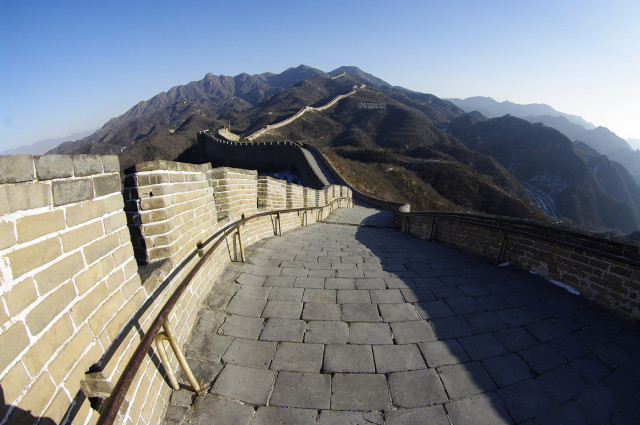
Photo by Tomoaki INABA.
Located 50 miles northwest of Beijing the Badaling section of the Great Wall is one of the most visited, and touristy, sites in China. This section was build in 1504 in the Ming Dynasty. Not far away are 13 tombs built by Ming Dynasty emperors.
2. Chengde Mountain Resort and its eight outlying temples (承德避暑山庄外八庙)

Photo by Robert.
The Chengde Mountain resort is a large complex of imperial palaces and gardens in north China’s Hebei province.
3. Mount Wutai (五台山)
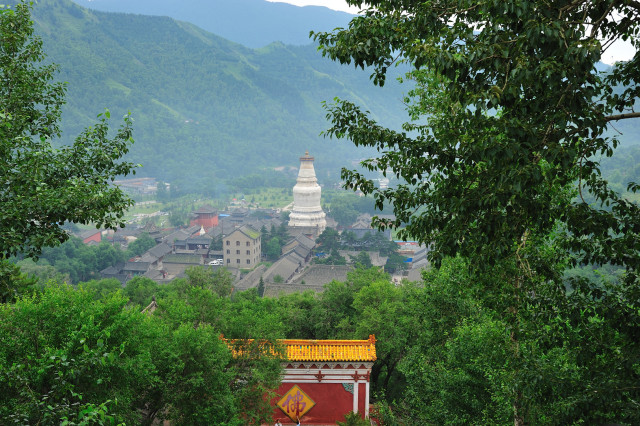
Photo by llee_wu.
Mount Wutai, also known as Qingliang mountain is located at the headwaters of the Qingshui river in the northeast China’s Shanxi province. At 3,061 meters, the north peak of the mountain, Yedou Feng, is the higest point in northern China. There are also 53 sacred monasteries in the mountain.
4. Lake Tai (太湖)

Photo by sj liew.
Lake Tai is a large freshwater lake in the Yangtze Delta near Shanghai. The lake’s southern shore forms the border between Jiangsu and Zhejiang provinces. It’s the third-largest freshwater lake in China, and and has about 90 island
5. Mount Putuo (普陀山)
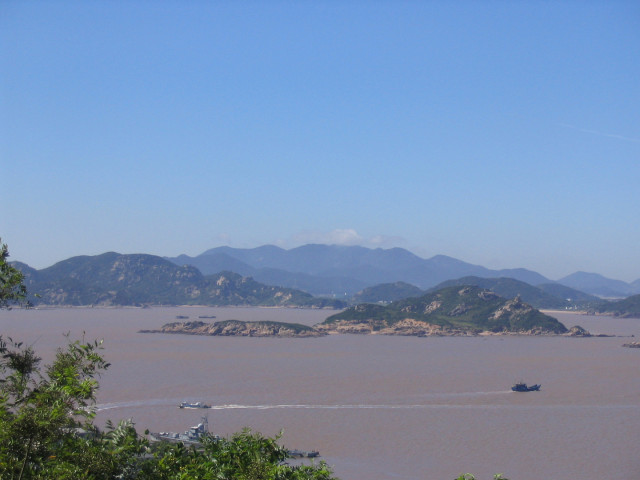
Photo by Wei Chen.
Mount Putuo is just Southeast of Shanghai in east China’s Zhejiang province. It’s a known site of Chinese Buddhism and it’s proximity to the the sea makes for great views.
6. Huangshan Mountain (黄山)

Photo by Tauno Tõhk / 陶诺.
Huangshan is a mountain range in east China’s Anhui province. The scenery is famous for it’s peculiarly shaped granite peaks, Huangshan Pine trees and hot springs. It’s a frequent subject of traditional Chinese paintings and literature.
7. Mount Jiuhua (黄山)

Photo by Kevin Schoenmakers.
Mount Jiuhua, literally: “Nine Glorious Mountains”, is a sacred site in Chinese Buddhism. Located in east China’s Anhui province, it’s famous for rich landscapes and ancient temples.
8. Wuyi Mountains (武夷山)
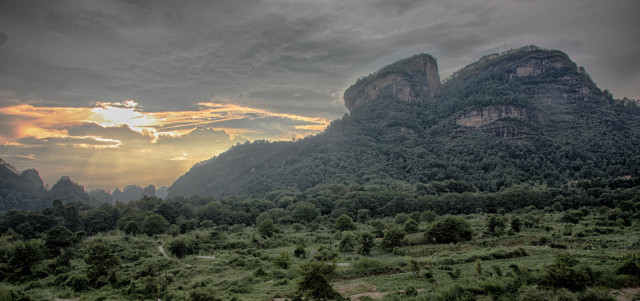
Photo by Jakob Nilsson-Ehle.
The Wuyi Mountains are a mountain range located in Nanping, in South China’s Fujian province near the border with Jiangxi province.
9. Mount Lu (庐山)

Photo by Xianyi Shen.
Mount Lu is located in Southeast China’s Jiangxi province and is one of the most renowned mountains in the country. Its highest point is Dahanyang Peak, 1,474 meters above sea level, which is one of the hundreds of steep peaks that towers above a sea of clouds that encompass the mountains for almost 200 days out of the year.
10. Mount Tai (泰山)
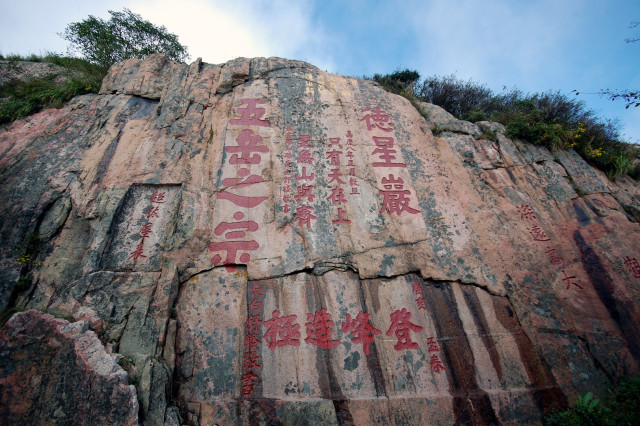
Photo by kanegen.
Located in northeast China’s Shandong province, Mount Tai is one of the “Five Great Mountains” of China. It is associated with sunrise, birth, and renewal, and is often regarded the foremost of the five. It’s been a place of worship for at least 3,000 years.
11. Mount Song (嵩山)
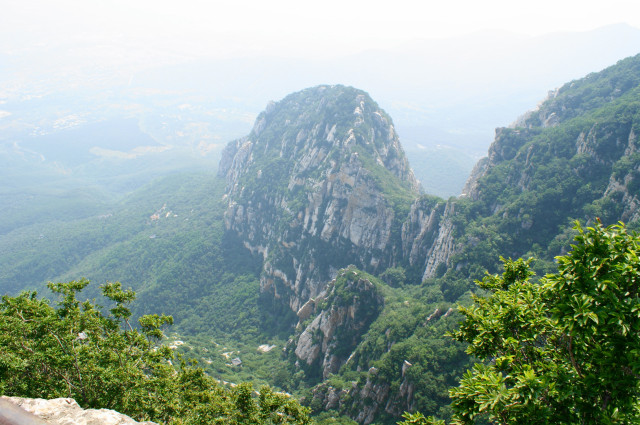
Photo by 叶宁.
Mount Song is located in north China’s Henan province on the southern bank of the Yellow River.
12. Wudang Mountains (武当山)
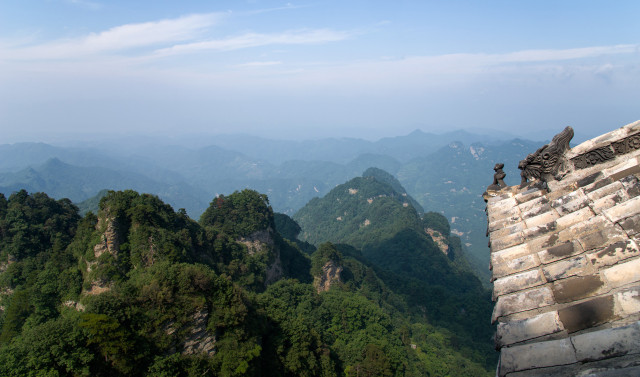
Photo by liuzr99.
The Wudang Mountains are a small mountain range in east China’s Hubei province. They are home to a famous complex of Taoist temples and monasteries associated with the god Xuan Wu. The Wudang Mountains are renowned for the practice of Taichi and Taoism.
13. Wulingyuan scenic area in Zhangjiajie (武陵源 (张家界))

Photo by Eric.
Wulingyuan is a UNESCO World Heritage Site in south China’s Hunan province famous for more than 3,000 quartzite sandstone pillars and peaks across most of the site. It features 40 caves, many with large calcite deposits, and two natural bridges, Xianrenqiao (Bridge of the Immortals) and Tianqiashengkong (Bridge Across the Sky).
14. Baiyun Mountain (白云山)
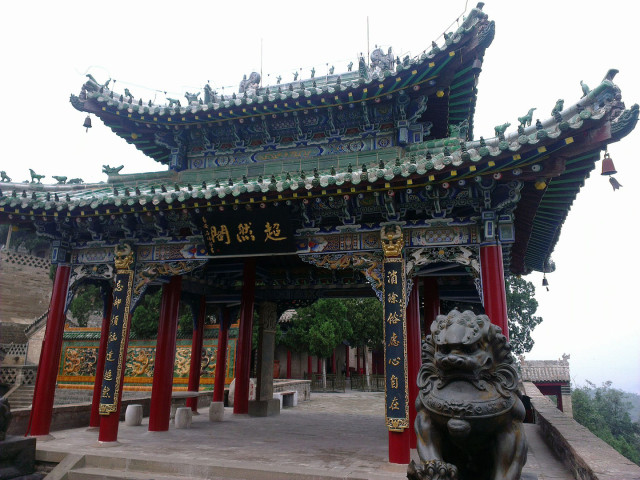
Photo by Nm900110.
Baiyun Mountain, is located near south China’s Guangdong province, near the capital of Guangzhou.
15. Mount Emei – Leshan Giant Buddha (峨眉山 – 乐山大佛)
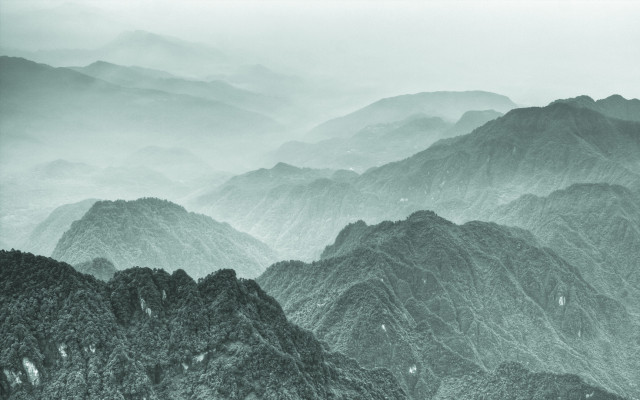
Photo by Sam Gao.
Mount Emei, is located in southwest China’s Sichuan province. The Leshan Giant Buddha is a 71-meter (233 foot) tall stone statue, built during the Tang Dynasty and carved out of a cliff face that lies at the confluence of the Minjiang, Dadu and Qingyi rivers. The sculpture faces Mount Emei, with the rivers flowing below his feet. It is the largest stone Buddha in the world and it is by far the tallest pre-modern statue in the world.
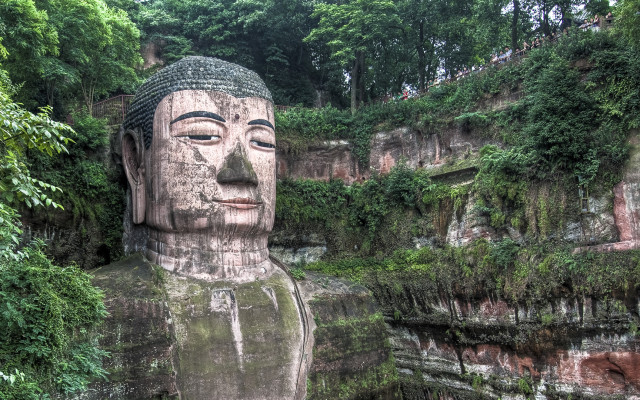
Photo by Sam Gao.
16. Jiuzhaigou Valley – Huanglong scenic spot (九寨沟 – 黃龙)
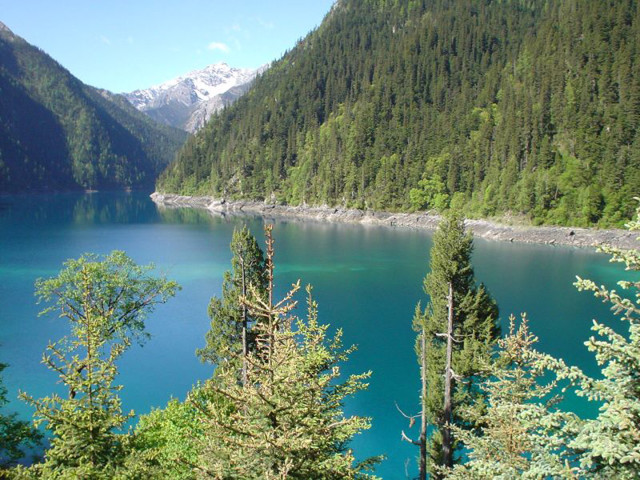
Photo by icysummer.
Jiuzhaigou Valley literally means: “Valley of Nine Villages” and is a nature reserve and national park located in Southwest China’s Sichuan province. The valley is part of the Min Mountains on the edge of the Tibetan Plateau and stretches over 72,000 hectares (180,000 acres). It is known for its many multi-level waterfalls, colorful lakes, and snow-capped peaks.
17. Huangguoshu scenic area (黄果树)
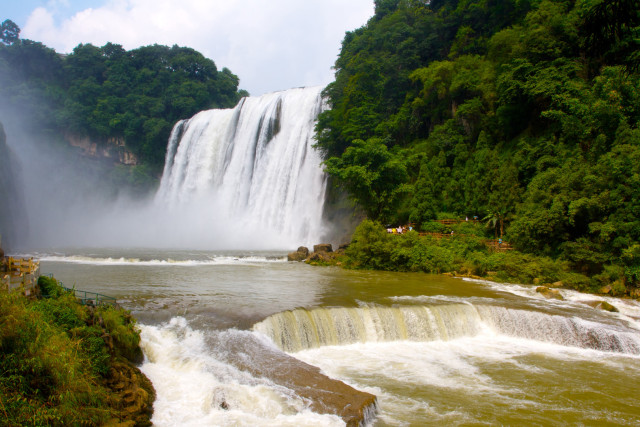
Photo by John Skiller.
Huangguoshu Waterfall is one of the largest waterfalls in China and is located southwest China’s Guizhou province.
18. Xishuangbanna Dai Autonomous Prefecture (西双版纳)

Photo by 二泉印月.
Xinshuangbanna is an autonomous prefecture south China’s Yunnan Province.
19. Mount Hua (华山)
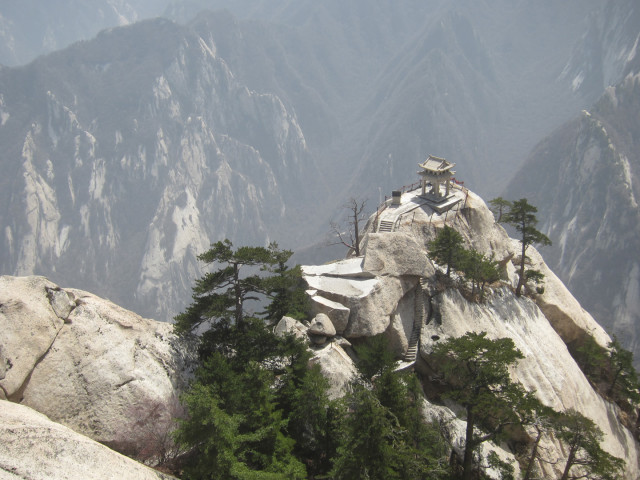
Photo by iamvhl.
Mount Hua is located north China’s Shaanxi province and is one of China’s Five Great Mountains, with a long history of religious significance.
20. Guiling Li River (桂林漓江)
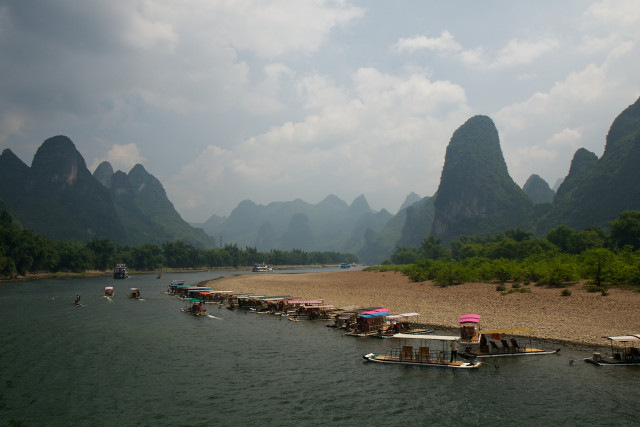
Photo by YU-WEN 郁文 LIN 林.
The Li River is located in southwest China’s Guangxi Zhuang Autonomous Region.
21. Sanya seaside (三亚热带海滨)
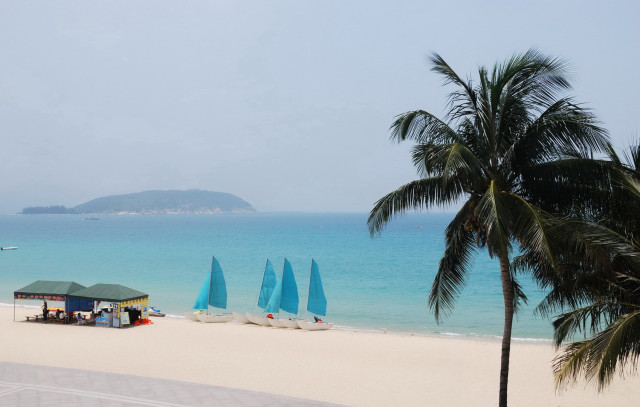
Photo by syue2k.
Sanya is the southernmost city on south China’s Hainan Island and is known for its tropical climate and beautiful beaches.
Story compiled with information from Wikipedia.
 CGTN America
CGTN America
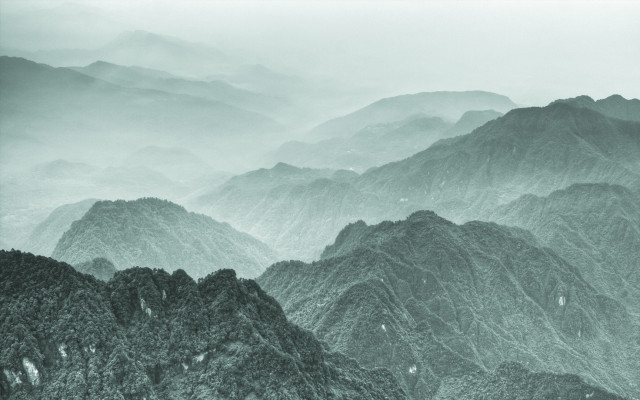 Mount Emei, in southwest China’s Sichuan province. Photo by Sam Gao.
Mount Emei, in southwest China’s Sichuan province. Photo by Sam Gao.
